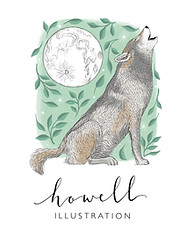How To Draw An Illustrated Map Part 4: Drawing the title block (or cartouche)
- Nicola Hawley

- Jan 10, 2024
- 3 min read
Updated: Jan 23, 2024
This post is a chat through the title block and the functions it performs on a map - and how to draw your own. (It might be helpful to see my post on drawing 3d shapes before reading this blog.)
Watch the accompanying Youtube video here.
Traditionally, the title block gave the cartographer a chance to exercise their artistic muscles, which means that some of the antique maps have stunning, intricate title blocks that are full of tiny detail. To see what I mean, please check out my Pinterest board on the topic, here. (There are also quite a few that don't, you'll have to decide what suits your map the most.)
Contents
AN EXAMPLE OF A TITLE BLOCK
I love including them on my maps, and I also love including within those, tiny details that are pertinent to the books I'm illustrating for. For example, the one below is from the Bruno, Chief of Police series by Martin Walker. I included Bruno's dog, and his horse, tennis rackets and a rugby ball, as well as a nod to the fleur de lis, given that the series is set in France.

DRAWING A ROUGH GUIDE
My title blocks do not always end up rectangular, as you can see in the shape above. But I always start with a rectangle just to get a feel for the information I need to include (roughing out the text is a great idea before you start, to make sure you have room for it all) and the basic shape. I then like to rough out a '3d' border around that. Because I normally include some elements that look 3d in my title block, this helps me to get in that headspace.

DESIGN
Decide how you want the map to 'feel'
For that I look at things like the era the map is based on (for example, my map of Inverness is set just after the battle of Culloden, so I looked at maps from that era to get a feel for how they looked), what information it's trying to impart (is it detailed? contemporary? minimal? whimsical?), if the map is based in the real world or a fantasy world etc.
In the case of my example below, I decided it was going to be a map telling the story of a couple. So I wanted a romantic, whimsical feel. I decided I needed a softer shape than the rectangle, and so went for an oval. I also decided to soften the edges of the shape with some flourishes. I added the shapes of the flourishes in using the original rectangle as my guide.
I would suggest really playing with it here. Don't keep any 'rules' in your head of how it 'should' look. Whenever I make a title block I literally just play with shapes until I like how it comes out. If you want inspiration, check out my pinterest board here.

CREATING CUTOUTS
I also really love 'cutouts' in my title blocks at the moment, hence the cutout circles in the four corners and the cutout rectangles on the right and left. To create a cutout, draw a shape within your border, then drop a shadow within it, that follows the line of one side of the shape. See the two rectangles at the edge of the title block above.
LETTERING
I don't use a font because I like my maps to look hand drawn, and thus they need to be a bit imperfect. But feel free to go ahead and use a font in your own work - especially if you like a neater look!
In this case I drew my own font, and I went for a slightly more contemporary look, with a contemporary style non-serif (without the flourishes), a blocky top line and contemporary calligraphy (contemporary calligraphy has a bit more space) on the line below.
I'll be going into more detail on the lettering at a later date. (To check out the timetable and all the links for my Youtube videos and blogs, check out my introductory post, here.)
DECORATING
You can really decorate however you want. If you want a very contemporary look, keep your lines clean and simple. If you want to bring in a bit more of an antique feel, make everything a bit more flowery and detailed.
Because I wanted mine to be romantic, I went for some pretty, whimsical leaves, but you can add pictures or patterns to your border.
You can also bring in elements personal to you or the story. Please see the Bruno example above, where I included things like tennis rackets and a dog.
I go into more detail on how to decorate your title block next time in my 'how to draw an illustrated map series', so make sure you check that out here!
As always, thanks for reading,
Nx




Kommentare